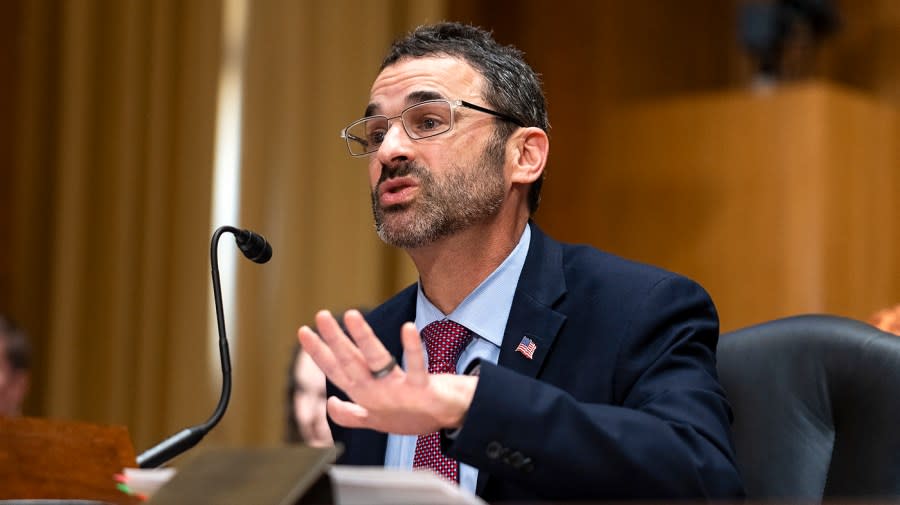Bogus employee retention claims are mucking up IRS operations

Both the IRS and its internal watchdog agency, the National Taxpayer Advocate, are sounding an alarm about bogus employee retention credit (ERC) claims that are interfering with tax-collection operations.
The ERC was one of many tax credits boosted by the IRS to help businesses and the economy stay afloat during the pandemic.
But despite a robust recovery and normalization across many economic metrics, businesses are still claiming the credit to the tune of around 17,000 a week and making it hard for the IRS to distinguish fraudulent claims from legitimate ones.
“The IRS is between the proverbial rock and a hard place when it comes to ERC claims,” Erin Collins of National Taxpayer Advocate said in a statement released along with her office’s midyear report to Congress.
“If it pays out ERC claims without adequate review, improper payments may be in the tens of billions of dollars. If it declines to pay ERC claims or delays payments further, the very businesses for which Congress created the ERC will be harmed again.”
IRS Commissioner Danny Werfel said much the same thing to reporters last week, calling out exploitative marketing and promotion activities that pushed the credit.
“Last year, promoters intensified their marketing, bombarding the airwaves with ads … You couldn’t turn on the TV or radio without coming across an ERC ad … The program turned into a gold rush for promoters,” he said.
The ERC, along with other pandemic-era rescue measures for the economy such as paycheck protection program loans, were key factors in surprisingly strong rebound from the 2020 recession. U.S. jobs data has boomed in recent years, puzzling economists, monetary authorities and markets alike after widespread predictions of recession.
Some economists predicted that unemployment would need to rise as high as 10 percent for inflation to get back on track. In fact, it has fallen most of the way back to 2 percent from its high of 9 percent in 2022 without any large uptick in unemployment. Inflation in the consumer price index stands now at an annual increase of 3.3 percent while unemployment remains at a low 4 percent.
With the economy far past the need for pandemic-related stimulus, lawmakers are now looking at ways to cut back the most costly legacies of that era.
The problematic ERC has been on the radar of lawmakers for several months and was made the primary pay-for in a $78 billion piece of tax legislation that has stalled in the Senate, which is now less than likely to move ahead of the election.
“We heard from a whistleblower that these new claims — 95 percent of them were close to fraudulent [or] were fraudulent,” Senate Finance Committee Chair Ron Wyden (D-Ore.) said back in January. “I asked the Commissioner [if] that was right, and he said, basically, ‘Yes.’”
Collins flagged several other issues for Congress that the IRS is now dealing with, including IRS taxpayer service levels, which Collins noted were different depending on internal and external metrics.
While the IRS’s internal “level of service” measurement clocked in at 88 percent for the midyear progress report, the agency actually answered less than a third of all calls.
“The 88 percent [level of service] leaves many observers with the impression that IRS employees answered 88 percent of taxpayer calls. In fact, IRS employees answered only 31 percent of taxpayer calls,” she said.
During the 2024 filing season, the IRS received 40 million calls, with IRS personnel answering 12.4 million of them. According to various internal distinctions, average hold wait times ranged between 3 minutes and 21 minutes.
Identity theft is also posing a problem, and Collins said the IRS needs to work faster in resolving these issues.
“As of April 2024, the IRS was taking more than 22 months to resolve identity theft victims’ assistance cases, plus several weeks to issue refunds, and it had approximately 500,000 unresolved cases in its inventory,” she noted.
The IRS is in the middle of a major operational overhaul resulting from the 2022 Inflation Reduction Act that ranges from new hiring of specialized auditors to centralization of analytics and the incorporation of artificial intelligence.
Of the initial $45 billion to be spent on additional enforcement, 3 percent or $691 million of that has been spent so far, up from 1 percent as of the end of December, according to the Treasury Inspector General for Tax Administration.
By contrast, 43.2 percent of the taxpayer service funds, which account for far less of the boosted allotment and have been criticized in the past as insufficient by Collins, have been spent so far, up from 33.8 percent at the end of last year.
Republicans have been chipping away at the increase in funds in the form of regular appropriations, having so far agreed with Democrats to scale back around a quarter of the initial $80 billion given to the agency.
The IRS is projecting to hire 4,088 auditors this year, up from 495 last year, and expects to hire an additional 7,239 through the end of next year, although those projections could change depending on the outcome of November’s election.
“IRS will more than double audit rates on the wealthiest taxpayers, while protecting small businesses and everyday families from additional audit scrutiny, but additional funding will be needed,” the agency said in the latest update to the strategic operating plan, which it is maintaining in relation to the funding boost.
President Biden has pledged not to raise taxes on anyone making less than $400,000 a year while also promising to let the Trump tax cuts expire. Republicans, however, are preparing to extend key parts of the Trump tax law set to lapse in 2026 if they’re able to capture the White House and majorities in both chambers.
Copyright 2024 Nexstar Media, Inc. All rights reserved. This material may not be published, broadcast, rewritten, or redistributed.
For the latest news, weather, sports, and streaming video, head to The Hill.


